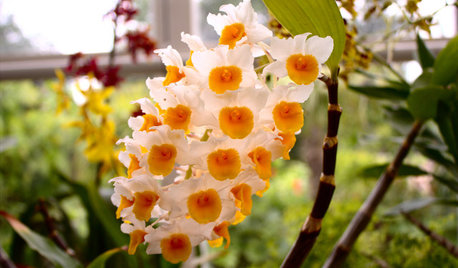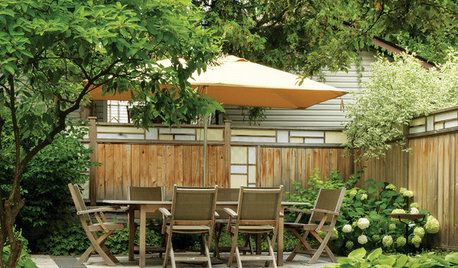Peat Moss
organic-kiki
17 years ago
Related Stories

HOUSEPLANTSBaby Tears Mimics Moss for a Green Accent Indoors
This adaptable spreader thrives in water or soil, making it a terrific addition to containers and living walls
Full Story
EDIBLE GARDENSSummer Crop: How to Grow Blueberries
Plant blueberries in spring or fall for garden beauty through three seasons — and a sweet superfood in summer
Full Story
FARM YOUR YARDHow to Grow Vegetables in Containers
Get glorious vegetables and fruits on your patio with a pro’s guidance — including his personal recipe for potting mix
Full Story
GARDENING GUIDESGardening Solutions for Heavy Clay Soils
What’s a gardener to do with soil that’s easily compacted and has poor drainage? Find out here
Full Story
HOUSEPLANTSOrchids 101: Try Something Different With Dendrobiums
If you’re looking for something out of the ordinary, these orchids may be a good choice
Full Story
FALL GARDENING7 Reasons Not to Clean Up Your Fall Garden
Before you pluck and rake, consider wildlife, the health of your plants and your own right to relax
Full Story
DECORATING GUIDESCompany Coming? 8 Quick Decorating Fixes
Declutter that bookshelf, flesh out the gallery wall check the light bulbs,
Full Story
GARDENING GUIDESHow to Fix Bare and Yellow Lawn Spots
Restore your turf’s good looks by reseeding unsightly patches
Full Story
GARDENING GUIDESGrow a Beautiful Garden in Alkaline Soil
Got alkaline soil? Learn how to manage it and the many beautiful plants that will thrive in this ‘sweet’ soil
Full Story
LANDSCAPE DESIGNGood Read: ‘Landscaping Ideas That Work’
Get a landscape architect’s strategies — along with gorgeous, inspiring photos — for a yard you’ll really enjoy
Full StoryMore Discussions








username_5
Kimmsr
Related Professionals
Carlisle Landscape Architects & Landscape Designers · River Forest Landscape Architects & Landscape Designers · Roosevelt Landscape Architects & Landscape Designers · West Chester Landscape Architects & Landscape Designers · Berwyn Landscape Contractors · Deerfield Beach Landscape Contractors · Fort Hunt Landscape Contractors · Paterson Landscape Contractors · Tigard Landscape Contractors · Maple Heights Landscape Contractors · Athens Decks, Patios & Outdoor Enclosures · Beavercreek Decks, Patios & Outdoor Enclosures · Freehold Decks, Patios & Outdoor Enclosures · Myrtle Beach Decks, Patios & Outdoor Enclosures · Prescott Decks, Patios & Outdoor Enclosurespablo_nh
gw:organic-kiki
pablo_nh
username_5
patty4150
username_5
gw:organic-kiki